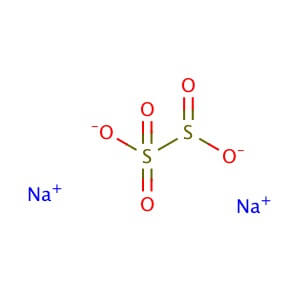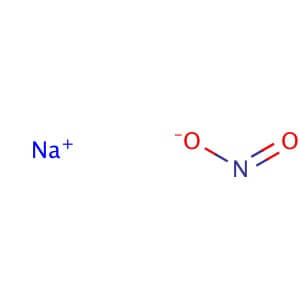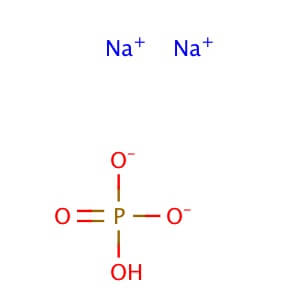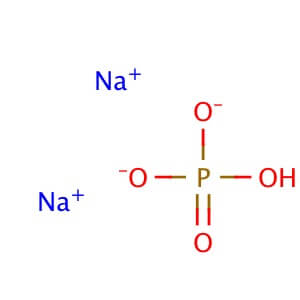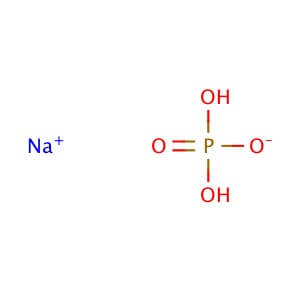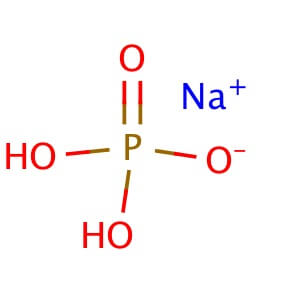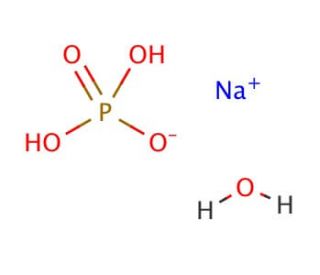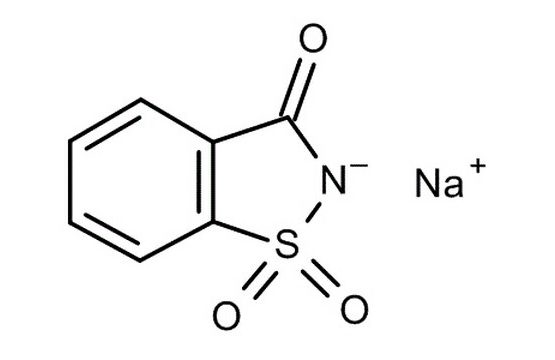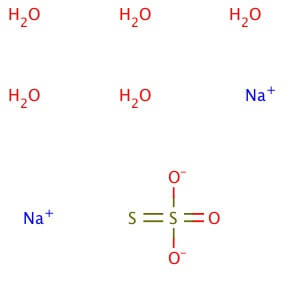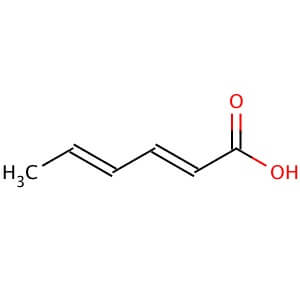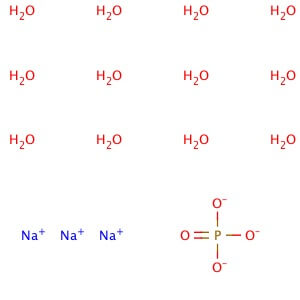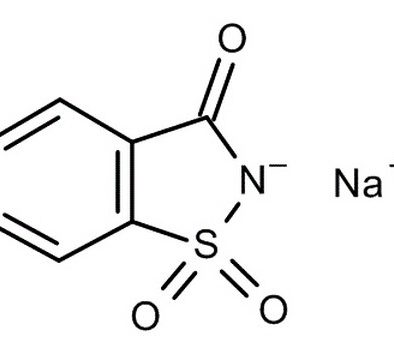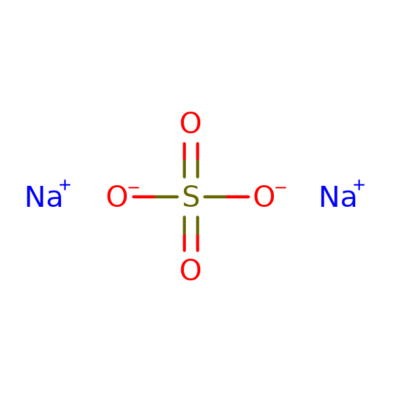Products
Showing 57–70 of 74 items
Sodium Metabisulphite
CAS NO: 7681-57-4
MOLECULAR FORMULA : S2O5•2Na
MOLECULAR WEIGHT : 190.1
SPECIALITY FINE CHEMICALS (AR / LR / ACR /GR / IP / BP / USP / FSSAI )Sodium Nitrite
CAS NO : 7632-00-0
Molecular Formula: NaNO2
Molecular Weight: 69.00
Application: Sodium nitrite is a strong oxidizer but stable under ordinary conditions of use and storage Purity: ≥97% Supplemental Information: This is classified as a Dangerous Good for transport and may be subject to additional shipping charges. Description Sodium Nitrite is soluble in water and readily forms colorless hexagonal crystals. It is a strong oxidizer but stable under ordinary conditions of use and storage. Noncombustible but accelerates the burning of combustible materials. Technical Information Appearance : Crystalline or powder Physical State : Solid Solubility : Soluble in water (820 mg/ml at 20° C), methanol (4.5 mg/ml), ethanol (3 mg/ml), ether (slightly), and NH3 (very soluble). Storage : Store at room temperature Melting Point : 271° C (lit.) Boiling Point : 320° C Density : 2.17 g/cm3 at 20° C IC50 : HL-60: IC50 = 94 µM (human) Ki Data : Salmonella Typhimurium carbonic anhydrase : Ki= 320 µM Sodium Phosphate Dibasic Anhydrous
CAS NO : 7558-79-4
Molecular Formula:Na2HPO4
Molecular Weight: 141.96 g/mol
CAS No: 7558-79-4 MOLECULAR FORMULA: Na2HPO4 MOLECULAR WEIGHT: 141.98 Alternate Names: Sodium Phosphate, Dibasic is also known as Disodium phosphate. Application: Sodium Phosphate, Dibasic is reagent with high buffering capacity for molecular biology, biochemistry, and chromatography. Purity: ≥99% Description Sodium Phosphate, Dibasic is a reagent with very high buffering capacity. Sodium Phosphate, Dibasic is widely used in molecular biology, biochemistry and chromatography. Sodium Phosphate, Dibasic is highly hygroscopic and water soluble. Sodium Phosphate, Dibasic is especially useful in conjunction with Sodium Phosphate, Monobasic in the preparation of biological buffers. Sodium Phosphate, Dibasic can be used in many applications including the purification of antibodies. Additional forms available: Sodium phosphate dibasic heptahydrate Sodium phosphate dibasic dihydrate Sodium phosphate dibasic dodecahydrate Sodium phosphate dibasic solution Appearance : Powder Physical State : Solid Solubility : Soluble in water (118 mg/ml at 25° C). Insoluble in ethanol, alcohol, methanol, and n-octanol. Storage : Store at room temperature Melting Point : 240.00° C Density : 1.52 g/cm3 Ki Data : CA IV: Ki= 9.8 µM (human) pK Values : pKa: pK1: 2.15 in phosphoric acid (25 C), pK2: 6.82 in phosphoric acid (25 C), pK3: 12.38 in phosphoric acid (25 C) Sodium Phosphate Dibasic Dihydrate
CAS NO: 10028-24-7
Molecular Formula: Na2HPO4•2H2O
Molecular Weight: 177.99
Alternate Names: Disodium phosphate dihydrate;Disodium hydrogen phosphate dihydrate Application: Sodium phosphate dibasic dihydrate is a reagent with high buffering capacity Purity: ≥98% Description Sodium phosphate dibasic dihydrate is a reagent with very high buffering capacity widely used in molecular biology, biochemistry and chromatography. Sodium phosphate dibasic is highly hygroscopic and water soluble. Useful in conjunction with Sodium Phosphate, Monobasic in the preparation of biological buffers. Used in many applications including the purification of antibodies. Appearance : Crystalline and crystalline granules Physical State : Solid Storage : Store at room temperature Sodium Phosphate Dibasic Dodecahydrate
CAS NO: 10039-32-4
Molecular Formula: HPO4•2Na•12H2O
Molecular Weight: 358.14
Application: Sodium phosphate dibasic dodecahydrate is a reagent with high buffering capacity CAS Number: 10039-32-4 Purity: ≥98% Molecular Weight: 358.14 Molecular Formula: HPO4•2Na•12H2O Supplemental Information: This is classified as a Dangerous Good for transport and may be subject to additional shipping charges. Description Sodium phosphate dibasic dodecahydrate is a reagent with very high buffering capacity widely used in molecular biology, biochemistry and chromatography. Sodium phosphate dibasic is highly hygroscopic and water soluble. Useful in conjunction with Sodium Phosphate, Monobasic (sc-202342, sc-215883 or sc-251042) in the preparation of biological buffers. Used in many applications including the purification of antibodies. Appearance : Crystalline Physical State : Solid Storage : Store at room temperature Sodium Phosphate Dibasic Heptahydrate
CAS NO: 7782-85-6
Molecular Formula:Na2HPO4•7H2O
Molecular Weight: 268.07
Application: Sodium phosphate dibasic heptahydrate is A high buffering capacity reagent CAS Number :7782-85-6 Purity: ≥98% Molecular Weight: 268.07 Molecular Formula: Na2HPO4•7H2O Descripton Sodium phosphate dibasic heptahydrate is a reagent with very high buffering capacity widely used in molecular biology, biochemistry and chromatography. Sodium phosphate dibasic is highly hygroscopic and water soluble. Useful in conjunction with Sodium Phosphate, Monobasic (sc-202342, sc-215883 or sc-251042) in the preparation of biological buffers. Used in many applications including the purification of antibodies. Appearance : Crystalline Physical State : Solid Solubility : Soluble in water (100 mg/ml). Storage : Store at room temperature Melting Point : 48° C Density : 1.68 g/cm3 at 25° C (lit.) Sodium Phosphate Monobasic Anhydrous
CAS NO: 7558-80-7
MOLECULAR FORMULA :- NaH2PO4
MOLECULAR WEIGHT :- 120.00 g/mol
SPECIFICATION IP BP USP Description A white powder or colorless crystals. White, slightly deliquescent crystals or granules. White, slightly deliquescent crystals or granules. Solubility – Very soluble in water and slightly soluble in ethanol (96 %). – Identification (A) Reaction
(B) Reaction
(C) Reaction
(D) LOD
A: It gives reaction of phosphates.
B: It gives reaction of sodium salts.
A : 10 % solution is slightly acidic B: It gives reaction of Phosphates.
C: It gives reaction of Sodium Salts.
D : Complies with the test for loss on drying
A: It gives reaction of phosphates.
B: It gives reaction of sodium salts.
pH 4.1 – 4.5 4.2 – 4.5 4.1 – 4.5 Insoluble Substances NMT 0.2 % – NMT 0.2 % Chloride NMT 140 ppm NMT 200 ppm NMT 140 ppm Sulphate NMT 1500 ppm NMT 300 ppm NMT 1500 ppm Al , Ca & related –element Not became turbid when rendered slightly alkaline to litmus paper with 6 M ammonium hydroxide. – Not became turbid when rendered slightly alkaline to litmus paper Arsenic NMT 8 ppm NMT 2 ppm NMT 8 ppm Heavy metals NMT 20 ppm – NMT 20 ppm Water by KF NMT 2.0 % – NMT 2.0 % Organic volatile impurities – – Meets the requirement Residual Solvents – Meets the requirement Iron – NMT.10 ppm – Reducing substance – The solution retains a slight red color. – LOD ( at 1300C ) – NMT 1.0% – Assay (on dry basis) 98.0 % – 103.0 % 98.0 % – 100.5% 98.0%-103.0% Sodium Phosphate Monobasic Dihydrate
CAS NO : 13472-35-0
MOLECULAR FORMULA :NaH2PO4•2H2O
MOLECULAR WEIGHT :156.01
Alternate Names: Sodium dihydrogen phosphate dihydrate; Monosodium phosphate dihydrate Application: Sodium phosphate monobasic dihydrate is a high buffering capacity reagent Physical State : Solid Storage : Store at room temperature Sodium Phosphate Monobasic Monohydrate
CAS NO: 10049-21-5
Synonyms: Sodium dihydrogen phosphate monohydrate; Monosodium phosphate monohydrate
Chemical Formula: H2NaO4P·H2O
Molecular Weight: 137.99 g/mol
Application: Sodium Phosphate, Monobasic, Monohydrate is a reagent with very high buffering capacity for formulating screens or for optimization.
CAS NO: 10049-21-5 Synonyms: Sodium dihydrogen phosphate monohydrate; Monosodium phosphate monohydrate Molecular Formula : H2NaPO4·H2O Molecular Weight: 137.99 g/mol Application: Sodium Phosphate, Monobasic, Monohydrate is a reagent with very high buffering capacity for formulating screens or for optimization. Purity: >99% Appearance : Crystalline powder Physical State : Solid Solubility : Soluble in water (850 mg/ml at 20 °C). pH : 4.1-4.5 Storage : Store at room temperature Density : 2.04 g/cm3 at 20° C Shelf Life : 60 Months HSN Code : 28352200 Appearance (Colour) White Appearance (Form) Crystalline powder Solubility (Turbidity) 10% aq. solution Clear Solubility (Colour) 10% aq. solution Colourless Assay (T) min. 99% pH (5% aq. solution) 4.1 – 4.5 Chloride (CI) max. 0.0005% Sulphate (SO4) max. 0.003% Iron (Fe) max. 0.001% Heavy Metals (Pb) max. 0.001% Potassium (K) max. 0.01% Absorbance (A) of 1M aq. solution in a 1cm cell v/s H2O @260nm max. 0.03 @280nm max. 0.02 Sodium Saccharine
CAS No: 6155-57-3
Molecular Formula: C7H8NNaO5S
Formula Weight: 241.197 g/mol
Alternate Names: 1,2-Benzisothiazol-3(2H)-one 1,1-Dioxide Sodium Salt Dihydrate Technical Information Physical State : Solid Storage : Store at room temperature, 2-8°C Refrigerator Category impurities,metabolites,intermediates,pharmaceutical standards,Fine Chemicals Appearance White to Off-White Solid Applications Saccharin Sodium Salt Dihydrate is a non-nutritive sweetener; pharmaceutic aid (flavor). Saccharin was formerly listed as reasonably anticipated to be a human carcinogen; delisted because the cancer data are not sufficient to meet the current criteria for this listing. Sodium Sulphate Anhydrous
CAS No:7757-82-6
Molecular Formula: Na2SO4
Molecular Weight: 142.04
Alternate Names: Disodium sulfate; Disodium sulphate; Bisodium sulfate
Application: Sodium sulfate anhydrous is for use as an inert drying agent
Purity: ≥99%
Product Information CAS number 7757-82-6 Hill Formula Na₂O₄S Chemical formula Na₂SO₄ Molar Mass 142.04 g/mol HS Code 2833 11 00 Quality Level MQ200 Applications Application Sodium sulfate anhydrous for synthesis. CAS No. 7757-82-6, EC Number 231-820-9. Physicochemical Information Density 2.70 g/cm3 (20 °C) Melting Point 888 °C pH value 5.2 – 8.0 (50 g/l, H₂O, 20 °C) Bulk density 1400 – 1600 kg/m3 Solubility 200 g/l Toxicological Information LD 50 oral LD50 Rat > 2000 mg/kg Safety Information according to GHS RTECS WE1650000 Storage class 10 – 13 Other liquids and solids WGK WGK 1 slightly hazardous to water Disposal 14 Inorganic salts: Container I. Neutral solutions of the these salts: Container D. Before placing in Container D, check the pH with pH-Universal indicator strips (Item No. 109535). Storage and Shipping Information Storage Store at +2°C to +30°C. Transport Information Declaration (railroad and road) ADR, RID Kein Gefahrgut Declaration (transport by air) IATA-DGR No Dangerous Good Declaration (transport by sea) IMDG-Code No Dangerous Good Product Information CAS number 7757-82-6 Hill Formula Na₂O₄S Chemical formula Na₂SO₄ Molar Mass 142.04 g/mol HS Code 2833 11 00 Quality Level MQ200 Applications Application Sodium sulfate anhydrous for synthesis. CAS No. 7757-82-6, EC Number 231-820-9. Physicochemical Information Density 2.70 g/cm3 (20 °C) Melting Point 888 °C pH value 5.2 – 8.0 (50 g/l, H₂O, 20 °C) Bulk density 1400 – 1600 kg/m3 Solubility 200 g/l Toxicological Information LD 50 oral LD50 Rat > 2000 mg/kg Safety Information according to GHS RTECS WE1650000 Storage class 10 – 13 Other liquids and solids WGK WGK 1 slightly hazardous to water Disposal 14 Inorganic salts: Container I. Neutral solutions of the these salts: Container D. Before placing in Container D, check the pH with pH-Universal indicator strips (Item No. 109535). Storage and Shipping Information Storage Store at +2°C to +30°C. Transport Information Declaration (railroad and road) ADR, RID Kein Gefahrgut Declaration (transport by air) IATA-DGR No Dangerous Good Declaration (transport by sea) IMDG-Code No Dangerous Good Sodium ThioSulphate
CAS NO: 10102-17-7
MOLECULAR FORMULA : Na2S2O3•5H2O
MOLECULAR WEIGHT : 248.18
SPECIALITY FINE CHEMICALS (AR / LR / ACR /GR / IP / BP / USP / FSSAI )Sorbic Acid
CAS NO: 110-44-1
Molecular Formula: C6H8O2
Molecular Weight: 112.13
Alternate Names: α-trans-γ-trans-Sorbic acid; (E,E)-1,3-Pentadiene-1-carboxylic acid; 2,4-Hexadienoic acid Purity: ≥99% Technical Information Appearance : Crystalline Physical State : Solid Solubility : Soluble in water. Storage : Store at 4° C Melting Point : 135-137° C Density : 1.204 g/cm3 Synonyms 2,4-Hexadienic acid CAS number 110-44-1 Grade Ph Eur,BP,NF,FCC,E 200 Hill Formula C₆H₈O₂ Molar Mass 112.13 g/mol HS Code 2916 19 95 Quality Level MQ500 Boiling point 160 – 260 °C (1013 hPa) (decomposition) Density 1.2 g/cm3 (20 °C) Flash point 127 °C Ignition temperature >130 °C Melting Point 135 – 137 °C pH value 3.3 (1.6 g/l, H₂O, 20 °C) Vapor pressure 0.01 hPa (20 °C) Bulk density 650 kg/m3 Solubility 1.6 g/l LD 50 oral LD50 Rat 7360 mg/kg LD 50 dermal LD50 Rat > 2000 mg/kg Hazard Pictogram(s) Hazard Statement(s) H315: Causes skin irritation. H319: Causes serious eye irritation. Precautionary Statement(s) P264: Wash skin thoroughly after handling. P280: Wear protective gloves/ eye protection/ face protection. P302 + P352: IF ON SKIN: Wash with plenty of water. P305 + P351 + P338: IF IN EYES: Rinse cautiously with water for several minutes. Remove contact lenses, if present and easy to do. Continue rinsing. P332 + P313: If skin irritation occurs: Get medical advice/ attention. P337 + P313: If eye irritation persists: Get medical advice/ attention. Signal Word Warning Storage class 10 – 13 Other liquids and solids WGK WGK 1 slightly hazardous to water Disposal 3 Relatively unreactive organic reagents should be collected in container A. If halogenated, they should be collected in container B. For solid residues use container C. Categories of danger irritant Storage Store at +15°C to +25°C. Assay (acidimetric, calc. on anhydrous substance) 99.0 – 101.0 % Assay (HPLC, calc. on anhydrous substance) 98.0 – 102.0 % Identity passes test Appearance of solution (5 %; ethanol 96 %) passes test Melting range (lower value) ≥ 133 °C Melting range (upper value) ≤ 135 °C Heavy metals (as Pb) ≤ 0.0010 % As (Arsenic) ≤ 0.0003 % Cd (Cadmium) ≤ 0.001 % Cu (Copper) ≤ 0.001 % Hg (Mercury) ≤ 0.0001 % Pb (Lead) ≤ 0.0002 % Zn (Zinc) ≤ 0.001 % Aldehydes (as Acetaldehyd) ≤ 0.15 % Acetone ≤ 5000 ppm Other residual solvents (ICH Q3C) excluded by the manufacturing process Thermal stability (105 °C) No coloration Loss on drying ≤ 0.5 % Water ≤ 0.5 % Sulfated ash ≤ 0.2 % Tri Sodium OrthoPhosphate
CAS NO: 10101-89-0
MOLECULAR FORMULA : Na3PO4 12H2O
MOLECULAR WEIGHT : 380.12
SPECIALITY FINE CHEMICALS (AR / LR / ACR /GR / IP / BP / USP / FSSAI )
Showing 57–70 of 74 items

